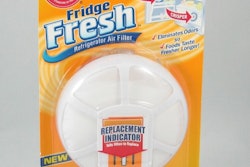
The packaging brief—some call it a design brief—is a proven tool that
can benefit brand management and product development by integrating
packaging into the thought process earlier. A well-designed brief
delivers more effective and efficient winning product launches.
Brand managers know that in the consumer’s mind, their brand is equal
to the Product + Package + Equity + Services. At the point of
purchase, all the shopper typically sees is the package. The package
can also influence the repurchase decision. Yet, in the concept and
product development process, the package is too often not considered or
is thought about far too late in the game. A packaging brief is a
simple tool that all marketing departments should use to assure that
packaging is considered up front and as an integral component
throughout their development process.
While packaging always has been a critical component of branded
products, during the last two years branding experts are recognizing
that it has not always been appreciated, as marketing has transitioned
from trying to reach the masses through television advertising to a
more consumer-focused, point-of-purchase, and word-of-mouth method.
Proctor & Gamble has formed a First Moment of Truth Department
aimed at truly understanding that critical moment when a consumer
chooses a single product from a cluttered store shelf. The role of the
package is critical in these first five seconds. Other companies are
now following P&G’s lead.
It is interesting to note, and a surprise to many, that marketing MBA
texts do not cover packaging. I found no more than three pages on the
subject. Given the importance of packaging in brand management, which
includes the packaging brief, this seems an obvious and root cause for
the high rate of new-product failures. So, if marketers aren’t
schooled in packaging, whose job is it? I suggest it’s the role of the
packaging professionals (packaging “engineers”), who are schooled in
the consumer and business aspects of packaging, but are often relegated
to “technology” and “engineering” roles in their companies. Packaging
professionals should be responsible for all aspects of packaging from
early consumer insights through manufacturing and retail channel sales.
Further, these packaging professionals do not do a good job of telling
marketers what they need to know in order to do their jobs.
The packaging brief can help put things on the right course. It is a
document within a product/marketing brief that contains critical
consumer, channel, product, and brand information. It can be
incorporated into a marketing brief, and it has some important criteria:
1. High-level sponsorship. Support comes from the vice president of marketing, chief marketing officer, and others.
2. Complete packaging information. All brand managers must complete the
packaging section of their brief, and it’s OK to say that they will not
invest in the package for a particular program or product. However,
they must document and be ready to defend their decision.
3. Financial/budget/profit-and-loss information. For new products,
dollars must be allocated for packaging, and the brand manager must
justify the amount. For product and line extensions and promotions, a
brand manager can request no additional packaging cost or enhancements
that might add value.
4. Consumer-relevant criteria. What should the package communicate?
Convenience, fun, great taste, performance, or health? Which channels
are initial targets for the package? What are future potential
channels? Early decisions can save cost, provide new material and
options, and improve speed-to-market.
5. A means for easily identifying the packaging section of the brief,
or creating an add-on “packaging brief” for the packaging department’s
use.
6. Cross-functional input. The packaging brief should be developed
cooperatively with input from packaging, product development, and
marketing. Ideally, it should also include packaging suppliers.
Packaging suppliers (converter, raw materials) play an important role
in creating a packaging brief. Packaging professionals may leverage
suppliers, and to do this effectively, sharing the packaging brief
early allows them to evaluate and deliver more options directly aimed
at marketing’s target. The alternative is that marketing or packaging
professionals (usually a single person) develop options from their
limited experience/portfolio. Allowing suppliers early involvement will
expand the range of options open to consideration. (Read the 2005
special report that appeared in Shelf Impact! on the Integrated Value
Chain Model.)
One packaging supplier shares its product-briefing document with
consumer packaged goods companies during the creative process. The
document forms a matrix that assigns present and future values to areas
such as the product, the end user, influencers, marketing, channel
distribution, competitors, sustainability, and manufacturing processes.
What does a packaging brief look like? Similar to marketing briefs or
concept briefs, the packaging brief is company-specific. It needs to be
simple and should not create a lot of additional work for the person
completing it. The packaging brief should be consistent with current
marketing documentation and the development process the company uses.


























